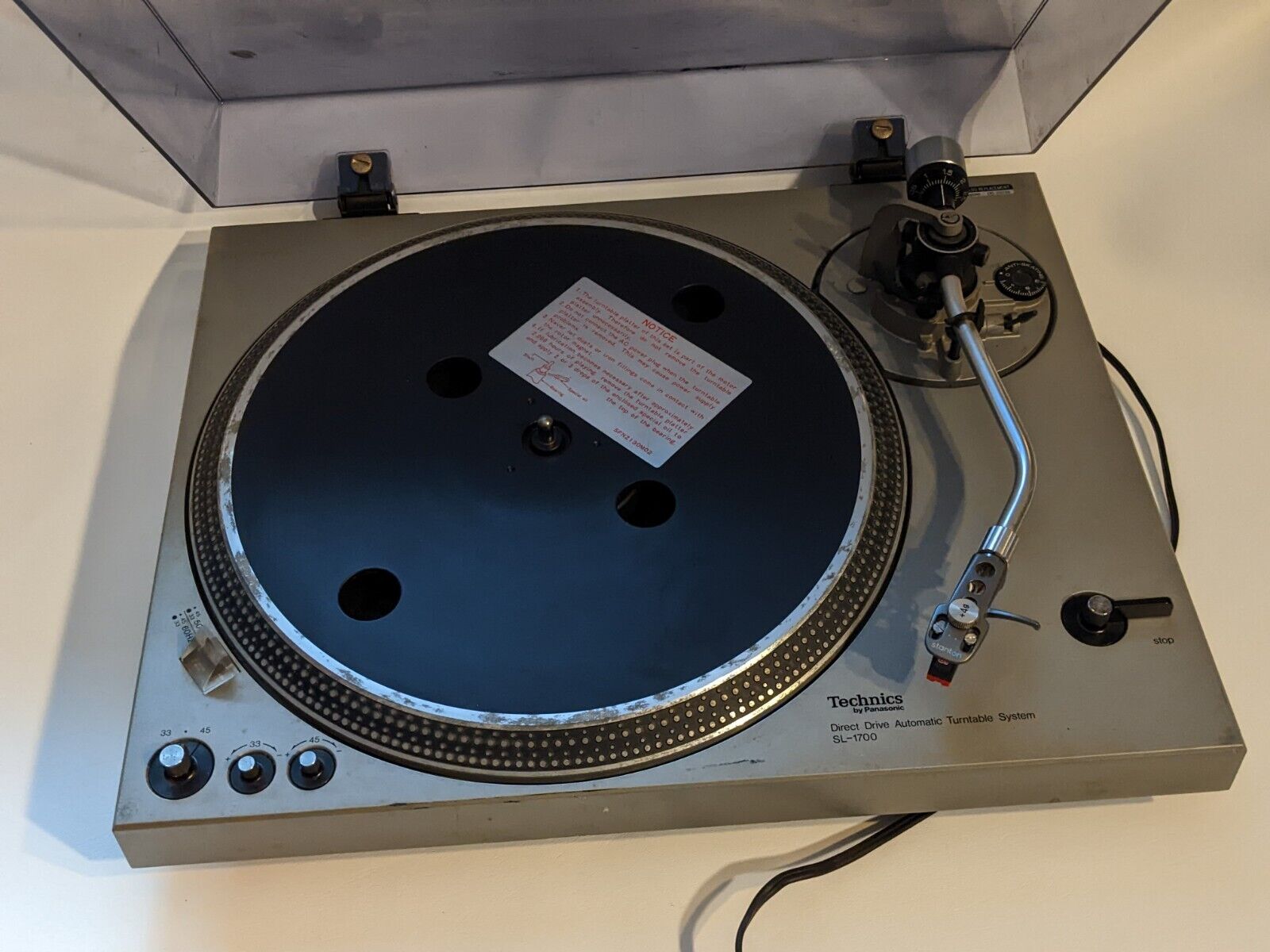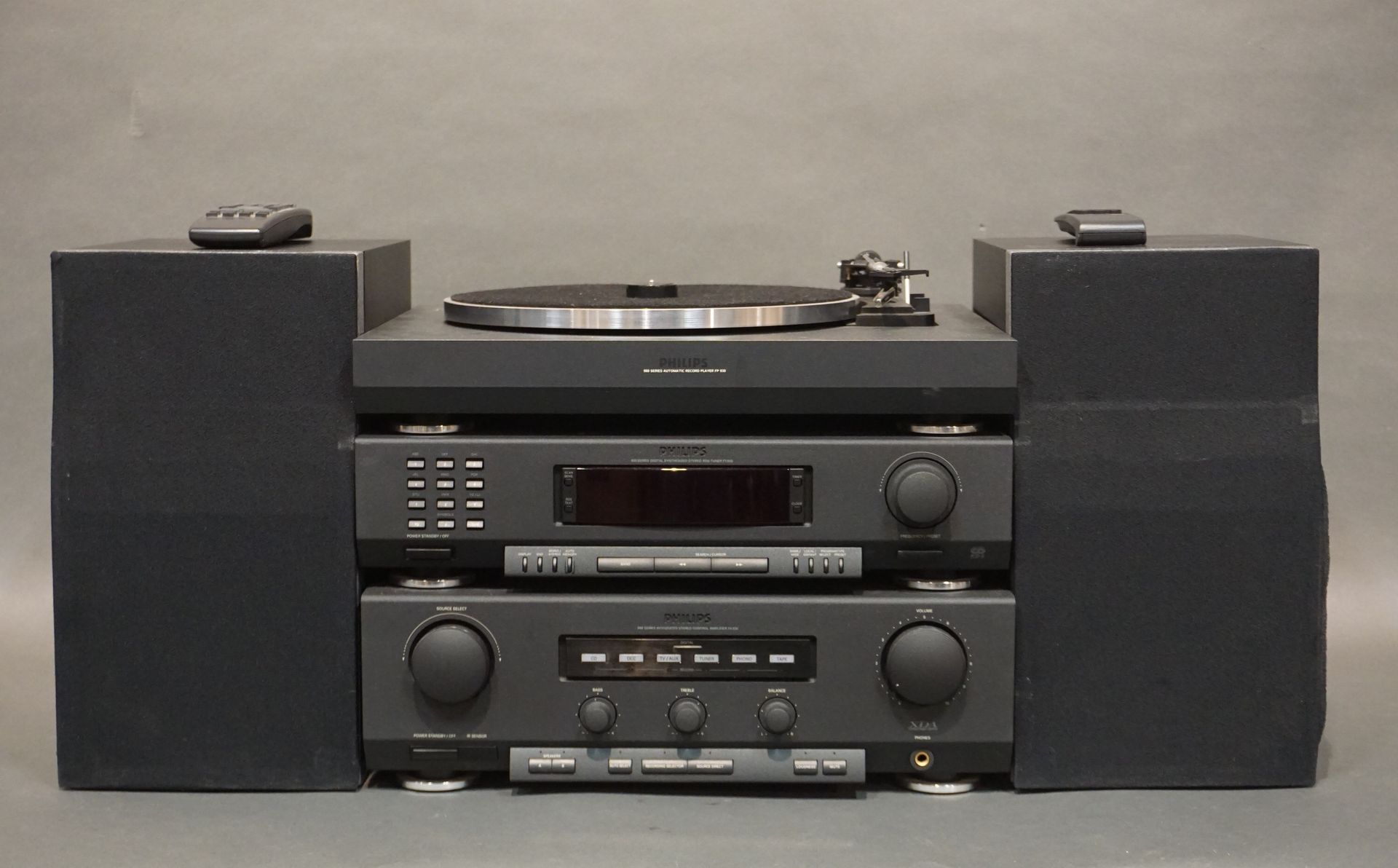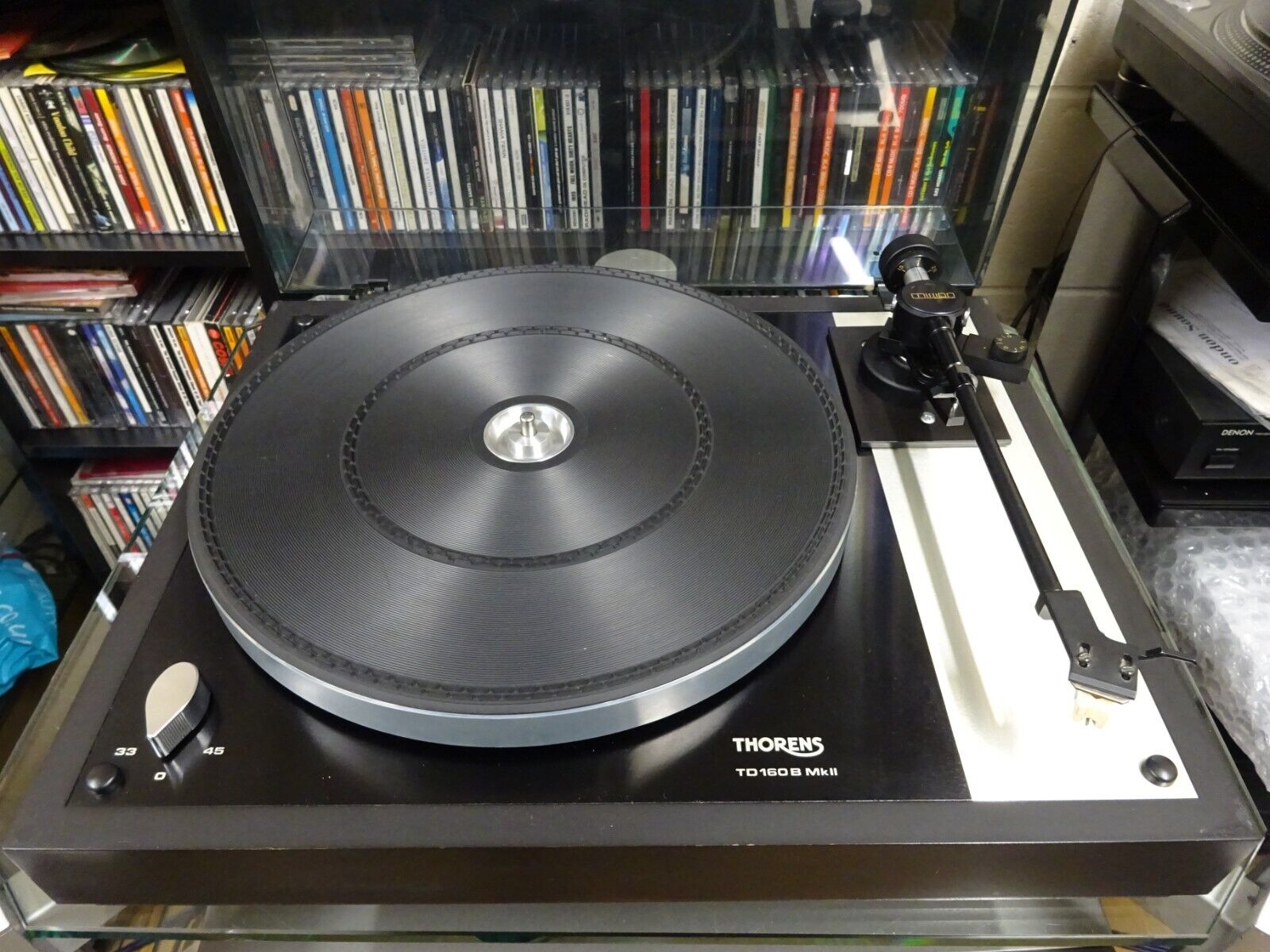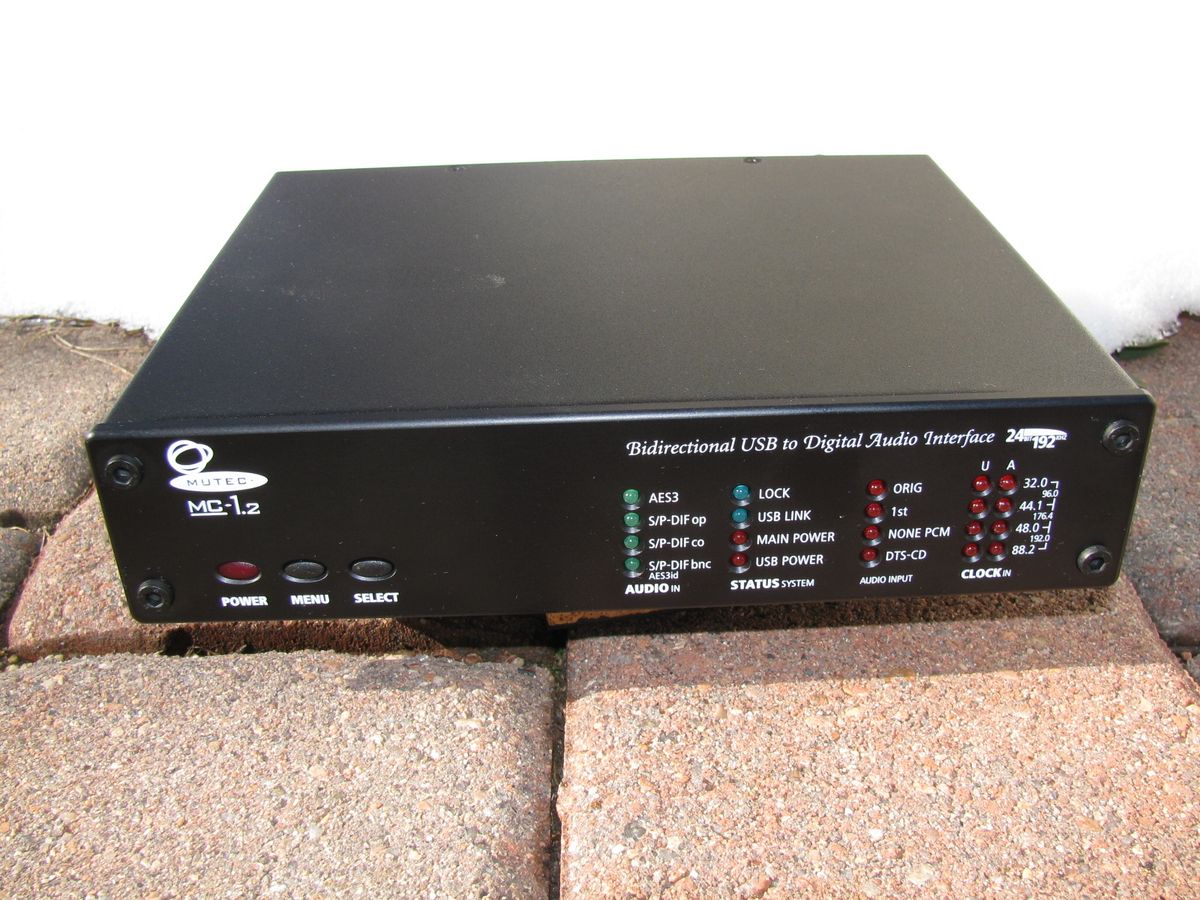Home>Devices & Equipment>Turntable>What Is The Function Of Quartz Lock On Turntable
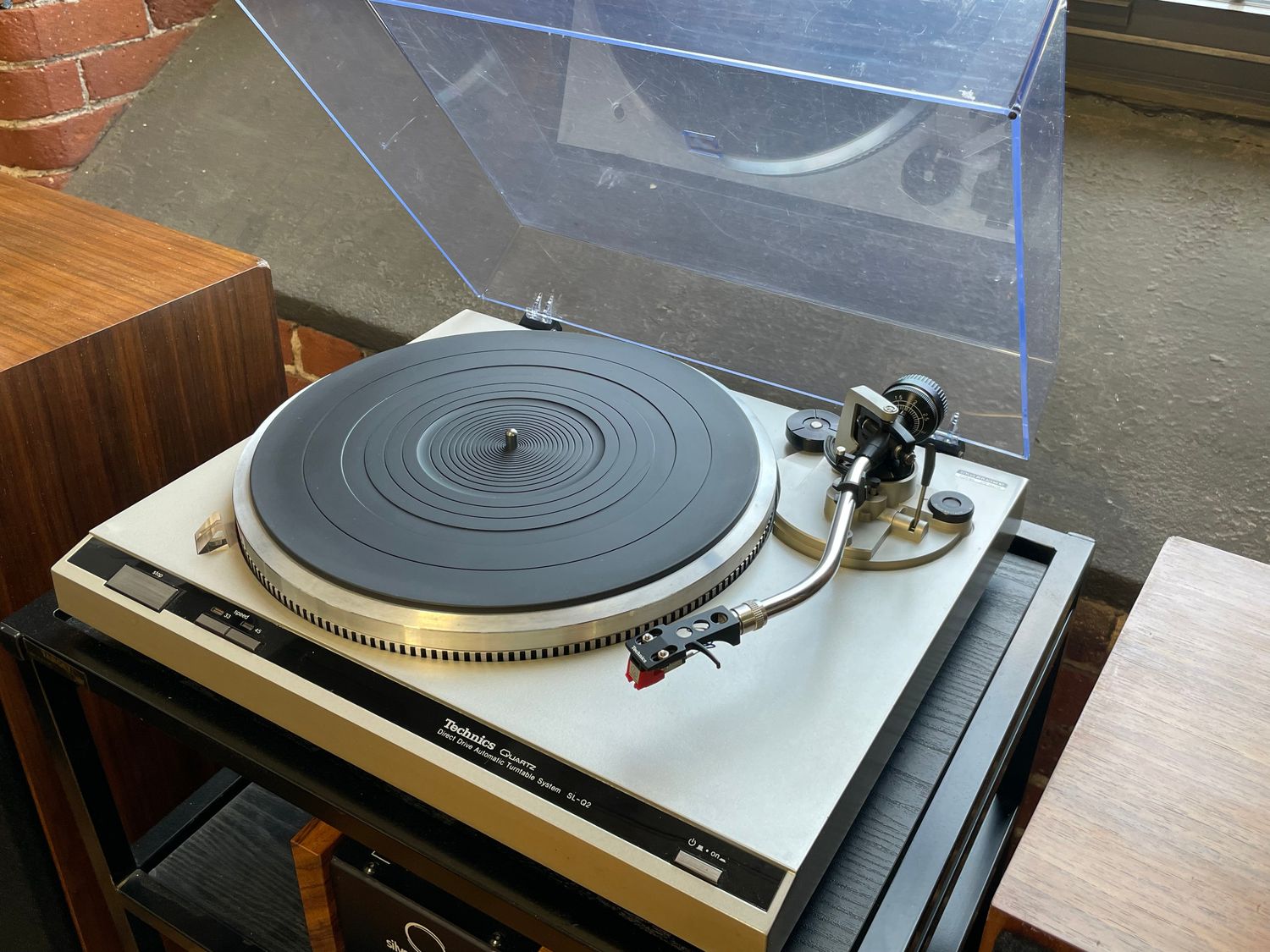

Turntable
What Is The Function Of Quartz Lock On Turntable
Published: January 20, 2024
Discover the function of quartz lock on a turntable and its importance in maintaining precise rotational speed. Improve your audio experience with this essential feature.
(Many of the links in this article redirect to a specific reviewed product. Your purchase of these products through affiliate links helps to generate commission for AudioLover.com, at no extra cost. Learn more)
Table of Contents
Introduction
Welcome to the world of turntables, where vinyl enthusiasts come alive with the warm sound and nostalgia that only vinyl records can provide. Turntables have been a staple in the music industry for decades, and their popularity continues to grow as more people rediscover the joy of vinyl.
For those new to the world of turntables, there are many technical aspects to consider when choosing the right one for your needs. One such feature is the quartz lock function, which plays a crucial role in ensuring accurate and stable playback. In this article, we will delve into the concept of quartz lock and its significance in turntable operation.
Understanding the Function of Quartz Lock on Turntables
Quartz lock is a feature found in some high-end turntables that helps maintain consistent rotational speed. The speed at which the turntable platter spins is critical for accurate playback. Any deviations in speed can result in pitch variations, making the music sound unnatural or distorted.
Without quartz lock, turntables rely on mechanical systems like belts or idler wheels to drive the platter. While these methods work well, they may be subject to slight variations in speed due to factors like belt stretch or motor fluctuations. Quartz lock, on the other hand, uses a quartz crystal oscillator to ensure precise and stable speed control.
How Does Quartz Lock Work?
Quartz lock works by using a quartz crystal oscillator that generates a precise electrical signal. This signal is used to control the motor of the turntable, ensuring that the platter rotates at a consistent speed. The quartz crystal oscillator acts as a reference point, allowing the turntable to maintain accurate rotation even in the presence of external factors that might otherwise affect speed.
Benefits of Quartz Lock
The primary advantage of quartz lock is that it delivers exceptional speed stability. This means that the turntable maintains a consistent rotational speed, resulting in accurate playback and pitch-perfect sound reproduction. Vinyl enthusiasts who value fidelity and want to experience music as intended by the artist will appreciate the benefits of quartz lock.
Additionally, quartz lock eliminates the need for constant manual adjustments to maintain speed accuracy. With quartz lock engaged, the turntable automatically adjusts the speed as necessary, saving time and effort for the user. This feature is particularly useful when playing long music tracks or when listening to albums with consistent tempo throughout.
Drawbacks of Quartz Lock
While quartz lock offers numerous benefits, it does come with some drawbacks. One of the drawbacks is that turntables equipped with quartz lock technology tend to be more expensive than those without. The inclusion of quartz lock adds to the overall cost of the turntable, making it a feature primarily found in higher-end models.
Additionally, some vinyl purists argue that the use of quartz lock can diminish the “analog feel” and natural variations in speed that are often associated with vinyl playback. They believe that the slight imperfections in speed give vinyl records a unique and organic sound that cannot be replicated by digital technologies. Therefore, quartz lock may not be desirable for those seeking a more vintage and organic vinyl listening experience.
Understanding Turntables
To fully appreciate the function of quartz lock, it’s necessary to understand the basic components and operation of a turntable. A turntable, also known as a record player, consists of several key elements that work together to produce sound from vinyl records.
The main components of a turntable include the platter, tonearm, cartridge, and stylus. The platter is the circular platform where the vinyl record is placed and rotates. It is typically driven by a motor, which can be belt-driven, direct-driven, or electronically-controlled.
The tonearm is a pivoting arm that holds the cartridge and stylus. It is responsible for tracking the grooves of the record and transmitting the audio signals to the amplifier. The cartridge contains the needle and generates electrical signals from the vibrations captured by the stylus as it tracks the record’s grooves.
Turntables also have controls for adjusting the speed of rotation. Most turntables offer the standard speeds of 33 1/3 RPM (revolutions per minute) for LP records and 45 RPM for singles. Some turntables also have the option to play 78 RPM records, which were commonly used for older shellac records.
The primary purpose of a turntable is to reproduce the audio stored within the grooves of a vinyl record. As the stylus tracks the grooves, it translates the physical variations into electrical signals. These signals are then amplified and sent to speakers to produce sound.
In addition to the basic components, turntables can feature various enhancements and technologies to improve sound quality and convenience. These can include built-in preamps, USB connectivity for digitizing records, and adjustable tracking force and anti-skate mechanisms to optimize performance. One such enhancement is the inclusion of quartz lock.
Quartz lock is a feature that specifically addresses the issue of speed stability. As mentioned earlier, the rotational speed of the platter is crucial for accurate playback. Inconsistent speed can result in pitch variations, which can affect the overall listening experience.
Quartz lock ensures that the turntable maintains a precise and steady rotational speed, minimizing any fluctuations that could impact the quality of sound reproduction. It is particularly useful when playing records with demanding audio content, such as classical music or tracks that require precise timing and synchronization.
Now that we have a basic understanding of turntables and their components, it’s time to delve deeper into the concept of quartz lock and how it works to provide stable and accurate playback.
What Is Quartz Lock?
Quartz lock is a feature found in certain high-quality turntables that ensures precise and consistent rotational speed. It utilizes a quartz crystal oscillator to provide a stable and accurate reference point for speed control. In simple terms, quartz lock is like having a built-in metronome for your turntable, ensuring that the music playback stays in perfect tempo.
The quartz crystal oscillator is a small electronic component that vibrates at a very precise frequency when an electrical current is applied. This inherent stability of the quartz crystal makes it an ideal reference point for measuring time and controlling the rotational speed of the turntable platter.
With quartz lock enabled, the turntable uses the quartz crystal oscillator to generate a reliable electrical signal, which in turn controls the motor that spins the platter. This signal ensures that the platter rotates at a consistent speed, regardless of any external factors that could potentially impact the speed stability, such as power fluctuations or belt slippage.
Quartz lock technology allows the turntable to make constant speed adjustments to maintain accuracy throughout the entire duration of a playing record. As the stylus tracks the grooves on the vinyl, the turntable continuously monitors the precise rotation speed and makes real-time adjustments to keep the speed consistent. This helps prevent any pitch variations or timing inconsistencies, resulting in faithful audio reproduction.
One of the benefits of quartz lock is its ability to provide a stable speed even when the turntable is subjected to other vibrations or disturbances. For example, if you accidentally tap the turntable or an external force nudges it, the quartz lock will quickly compensate and maintain the correct rotational speed, minimizing any audible impact on the playback.
This feature is especially important for DJs and audiophiles who rely on accurate speed control, ensuring seamless mixing or precise synchronization with other audio equipment. Quartz lock allows DJs to confidently manipulate the turntable while maintaining the correct beat and tempo.
Overall, quartz lock is a valuable addition to turntables, delivering stability and accuracy in speed control. Whether for casual listening or professional use, this feature ensures that your vinyl records are played back with the utmost precision, enhancing your enjoyment and appreciation of the music.
How Does Quartz Lock Work?
Quartz lock works by utilizing a quartz crystal oscillator, an electronic component that generates a precise electrical signal based on the inherent stability of quartz crystals. This signal is then used to control the motor of the turntable, ensuring accurate and consistent rotational speed.
When the quartz lock feature is engaged, the quartz crystal oscillator produces an electrical signal with a fixed frequency. This signal acts as a reference point for the turntable’s speed control mechanism. The signal is sent to the motor, which adjusts the rotation speed of the platter accordingly.
The quartz crystal oscillator operates on the principle of the piezoelectric effect. When an electric current passes through the quartz crystal, it undergoes mechanical stress and vibrates at a precise frequency known as the resonant frequency. This frequency is determined by the physical dimensions and molecular composition of the quartz crystal.
The resonant frequency of quartz crystals is highly stable and does not deviate significantly over time. This property makes quartz an ideal material for accurate timekeeping in applications such as watches, clocks, and, in the case of turntables, speed control.
When the quartz lock is engaged, the electrical signal generated by the quartz crystal oscillator is compared to the actual speed of the turntable’s motor. If there is any deviation, a feedback loop is activated, adjusting the motor’s speed to match the desired reference frequency generated by the oscillator.
This constant feedback loop ensures that the speed of the turntable remains consistent and stable, even in the presence of external factors that might affect the motor’s rotation speed. Any fluctuations caused by variations in voltage, temperature changes, or mechanical factors are quickly detected and compensated for by the quartz lock system.
The precise speed control provided by quartz lock is especially beneficial when playing vinyl records with critical timing requirements, such as classical music or tracks that rely on precise synchronization. It ensures that the playback is faithful to the original recording, maintaining accurate pitch and timing throughout the entire duration of the record.
In summary, quartz lock works by using a quartz crystal oscillator to generate a stable electrical signal. This signal serves as a reference point for the turntable’s speed control, enabling precise adjustments to maintain consistent rotational speed. The result is accurate and reliable playback, enhancing the overall listening experience.
Benefits of Quartz Lock
Quartz lock provides several significant benefits for turntable users, especially for those who prioritize accuracy and stability in their audio playback. Let’s explore the advantages that quartz lock brings to the table:
1. Speed Stability: One of the primary benefits of quartz lock is its ability to maintain a precise and consistent rotational speed of the turntable platter. This ensures that the playback speed remains accurate, eliminating pitch variations and preserving the integrity of the music. Whether you’re listening to music or mixing tracks as a DJ, quartz lock ensures that every beat and note is reproduced faithfully.
2. Pitch-Perfect Sound: With consistent speed control, quartz lock ensures that the pitch of the music remains steady. This is particularly important when playing vinyl records with vocal performances or instrumental solos that require precise pitch accuracy. Quartz lock helps deliver a natural and pleasing sound reproduction, preserving the original intentions of the artists and producers.
3. High-Fidelity Audio: Quartz lock contributes to overall audio fidelity. By maintaining accurate rotational speed, it minimizes wow and flutter, which are imperfections introduced by speed variations in turntables. Wow refers to the slow variations in pitch, while flutter refers to the rapid variations. With quartz lock, the playback is free from these distortions, resulting in a cleaner and more enjoyable listening experience.
4. Convenience and Time-saving: Another advantage of quartz lock is the convenience it offers to users. With the automatic speed adjustment provided by quartz lock, you don’t have to constantly monitor and manually adjust the turntable’s speed throughout the playback of a record. This feature is particularly helpful for long-playing records or albums with consistent tempo, as it saves time and effort, allowing you to sit back and enjoy the music.
5. DJ-Friendly: Quartz lock is highly beneficial for DJs who rely on precise beat-matching and synchronization. It allows DJs to confidently mix tracks, knowing that the turntable’s speed control is accurate and stable. This feature is especially crucial in professional settings where tight beat matching is essential for seamless transitions and a flawless mixing experience.
Overall, quartz lock enhances the performance and enjoyment of turntables by delivering speed stability, pitch-perfect sound, high-fidelity audio, convenience, and DJ-friendly functionality. Whether you’re an avid vinyl collector, a casual listener, or a professional DJ, quartz lock ensures that your music playback is reliable, accurate, and of the highest quality.
Drawbacks of Quartz Lock
While quartz lock offers numerous benefits for turntables, it is important to consider its drawbacks as well. Here are some potential limitations of quartz lock:
1. Cost: Turntables equipped with quartz lock technology tend to be more expensive than those without this feature. The inclusion of quartz lock adds to the overall cost of the turntable, making it a more significant investment for vinyl enthusiasts on a budget. However, for those seeking precise speed control and high-quality audio reproduction, the additional cost may be well worth it.
2. Loss of Analog Feel: Some vinyl purists argue that quartz lock technology can diminish the “analog feel” and the natural variations in speed that are often associated with vinyl playback. They believe that the slight imperfections in speed give vinyl records a unique and organic sound that cannot be replicated by digital technologies. For those who prefer a more vintage and organic vinyl listening experience, quartz lock may not be desirable.
3. Lack of Manual Control: With quartz lock engaged, the turntable’s speed is automatically adjusted based on the reference signal generated by the quartz crystal oscillator. While this convenience is appreciated by many users, it may limit the ability for manual speed adjustments. Some audiophiles enjoy the ability to fine-tune the speed of their turntable manually for specific records or personal preference, which may not be possible with quartz lock technology.
4. Reliance on External Power: Quartz lock requires a reliable and stable power source to function effectively. Any power fluctuations or interruptions can impact the performance of quartz lock and result in speed variations. Users may need to ensure that their turntable is connected to a consistent power supply to maintain the desired speed stability provided by quartz lock.
While these drawbacks should be taken into consideration, it is essential to note that quartz lock remains a valuable feature for many turntable users. The decision to incorporate quartz lock into a turntable ultimately depends on individual preferences and priorities – whether it’s accurate speed control, convenience, or the desire for an authentic analog experience.
Alternatives to Quartz Lock
While quartz lock is a popular and effective technology for maintaining speed stability on turntables, there are alternative methods that can achieve similar results. Here are a few alternatives to consider:
1. Direct Drive Turntables: Direct drive turntables use a motor directly connected to the platter, eliminating the need for belts, idler wheels, or quartz lock. These turntables have built-in speed control mechanisms that provide consistent rotation without relying on external reference signals. Direct drive turntables are known for their excellent speed accuracy and responsiveness, making them a reliable alternative to quartz lock.
2. Manual Adjustment: Some turntables offer manual adjustment options for speed control. These turntables allow users to fine-tune the rotation speed by adjusting the motor speed manually. While this method requires more effort and attention from the user, it provides a level of control and customization that may be desirable for vinyl enthusiasts who want complete manual control over the playback experience.
3. Belt-Driven Turntables: Belt-driven turntables use a belt that connects the motor to the platter. These belts can be adjusted to control the rotational speed of the platter. While belt-driven turntables may require periodic maintenance, such as belt replacements due to wear and stretching, they can provide accurate and stable speed control without the need for quartz lock technology.
4. Strobe Discs: Strobe discs are tools used to visually check the rotational speed of turntables. These discs feature a pattern of lines or dots that appear stationary when the turntable is spinning at the correct speed. By observing how the pattern appears under a strobe light, users can adjust the turntable’s speed manually to achieve accurate rotation. While strobe discs are not directly integrated into turntables, they offer a simple and effective method for speed calibration.
5. External Speed Control Units: Some turntables can be paired with external speed control units. These units are separate devices that provide precise speed control and stability by connecting to the turntable. They often come with additional features such as fine-tuning adjustments, digital displays, and the ability to synchronize multiple turntables. External speed control units offer an alternative means of achieving consistent and accurate speed control without relying on internal quartz lock technology.
When considering alternatives to quartz lock, it’s important to assess your specific needs and preferences. Each alternative comes with its own advantages and limitations, and what works best for one person may not be ideal for another. Ultimately, the choice depends on factors such as budget, desired level of control, and the importance placed on speed accuracy in the vinyl playback experience.
Conclusion
Quartz lock is a valuable feature in turntables that ensures precise speed control and accurate playback of vinyl records. With the use of quartz crystal oscillators, turntables equipped with quartz lock maintain stable and consistent rotational speed, eliminating pitch variations and preserving the integrity of the recorded music.
The benefits of quartz lock are significant. It delivers speed stability, resulting in a pitch-perfect sound reproduction and high-fidelity audio. Quartz lock also offers convenience, saving time and effort by automatically adjusting the speed without the need for constant manual intervention. For DJs, quartz lock provides the reliability and accuracy required for seamless mixing and synchronization.
However, quartz lock does come with some drawbacks. The cost of turntables with quartz lock technology can be higher compared to those without this feature. Additionally, some vinyl enthusiasts argue that quartz lock diminishes the subtle analog feel and natural speed variations that contribute to the charm of vinyl playback. Quartz lock may not provide the manual control that some users desire, and it relies on a stable power source to function optimally.
Alternatives to quartz lock, such as direct-drive turntables, manual adjustment, belt-driven turntables, strobe discs, and external speed control units, offer different approaches to achieve speed control and stability. These alternatives may be more suitable for users seeking specific functionalities or preferring a different playback experience.
In conclusion, quartz lock is a valuable feature for those seeking accurate and reliable speed control in turntables. It offers numerous benefits in terms of speed stability, sound accuracy, and convenience. However, individual preferences, budget, and desired level of control should be taken into consideration when deciding whether to opt for a turntable with quartz lock or explore alternative options. Whether you choose quartz lock or an alternative method, the joy and experience of vinyl playback are ultimately enhanced by the dedication to preserving the art of music in its purest form.

